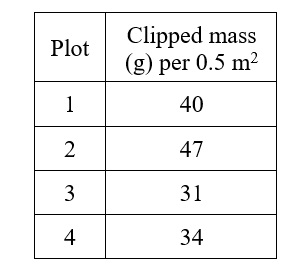NR 421 – Assignment #2
Sample Size and Introduction to Inferential Statistics
Objective: This assignment will ask you to apply probability theory in determining sample size and reporting confidence in population parameters. You should start to master an understanding of the relationship between population variability, sampling intensity, and sampling precision.
Student Learning Outcomes: Upon completing this assignment you should be able to:
- Explain the difference between accuracy and precision in sampling.
- Be able to contrast the Law of Large Numbers and Central Limit Theorem.
- Calculate the number of samples needed to achieve a specified sampling precision.
- Summarize a basic sampling design and describe your confidence in the population parameter.
1. Does a set of samples provide you an estimate of accuracy or precision? Explain why?
2. What is the difference between a sample and a census, what are the benefits of both?
3. What does the Central Limit Theorem state and why is it important to sampling?
4. What is a simple random sample and what does it mean about the relationship between samples?
5. If the allowable error is given as a percent what measure of the population variation would you use to calculate sample size? Assume no calculation other than the sample size calculation.
6. What would “n” and “N” be when inventorying a stand of 80 acres using twenty 1/10 acre plots, using sampling without replacement?
7. Summarize the following pilot study and determine how many plots are required to estimate the mean forage per acre within a pasture to an acceptable error of ±9% with 95% certainty and assuming the pasture is infinitely large.

8. You have been asked to sample the canopy cover within a stream corridor of the headwaters to the St Vrain watershed, which mean characterizing the cover percentage within 100 m of the stream centerline for a 2 km stretch of the stream. You have decided to use simple random sampling of 100 m long line-point intercept transects that run perpendicular to the stream with 20 observations on each transect of canopy presence and absence. You are assuming each transect represents a 100 x 100 m area on one side of the stream. From areal imagry you determin that you will need 25 transects to estimate the corridors cover to within 10% of the true value with 95% confidence. From your samples, determine the mean canopy cover along the corridor and make a statement about our confidence in its relationship to the true mean. Then determine if the precision objective for estimating the population parameter was met?

Extra Credit (6 points):
Explain in your own words what the author of the Distribution, Standard Deviations, & Confidence has to say about the following ideas:
- How do we get around the fact that most populations are not normally distributed?
- Explain the difference in what confidence intervals created with the SD vs SE describe about a population.
- Explain the use and caution the author presents about the coefficient of variation.
